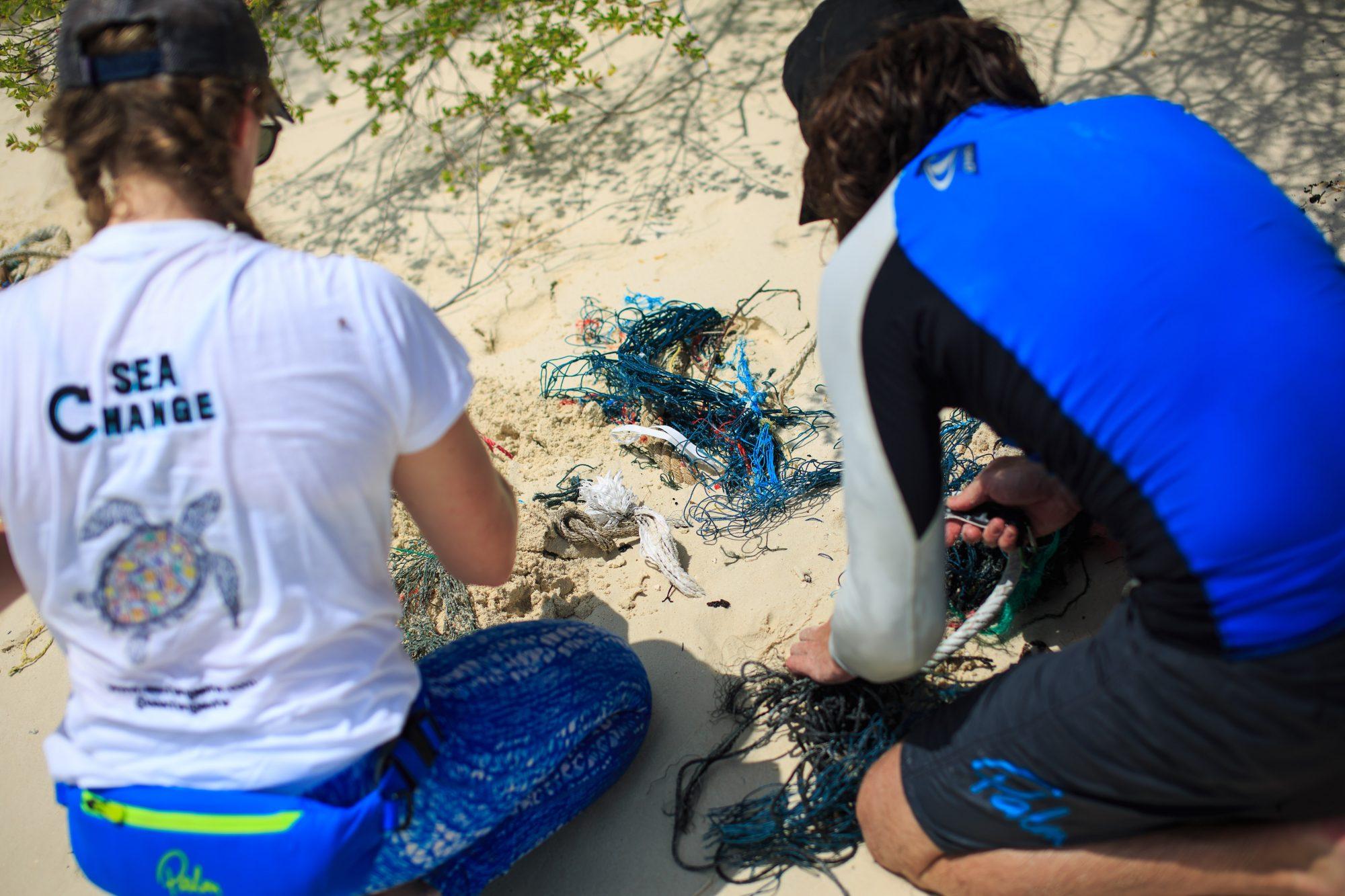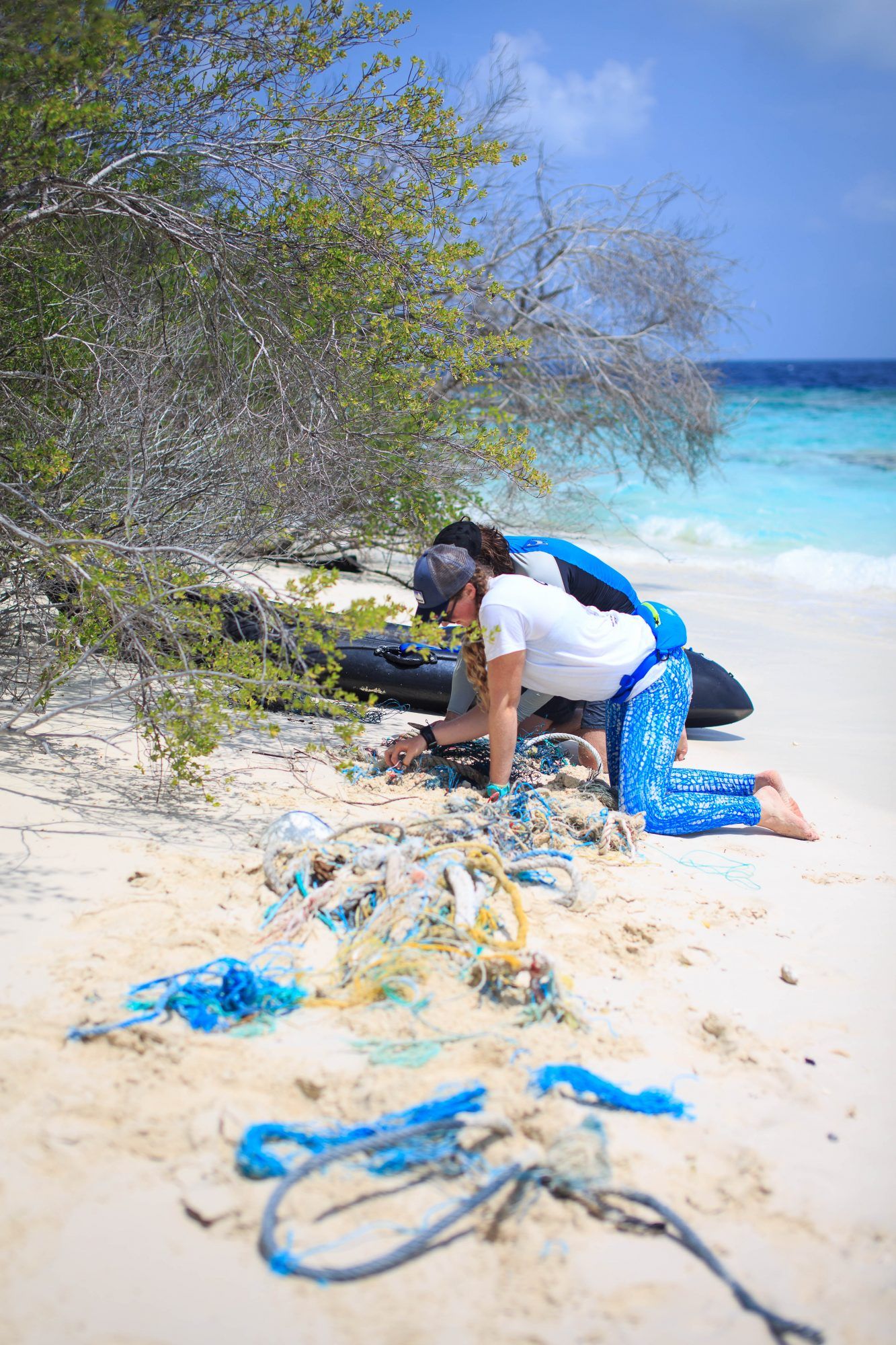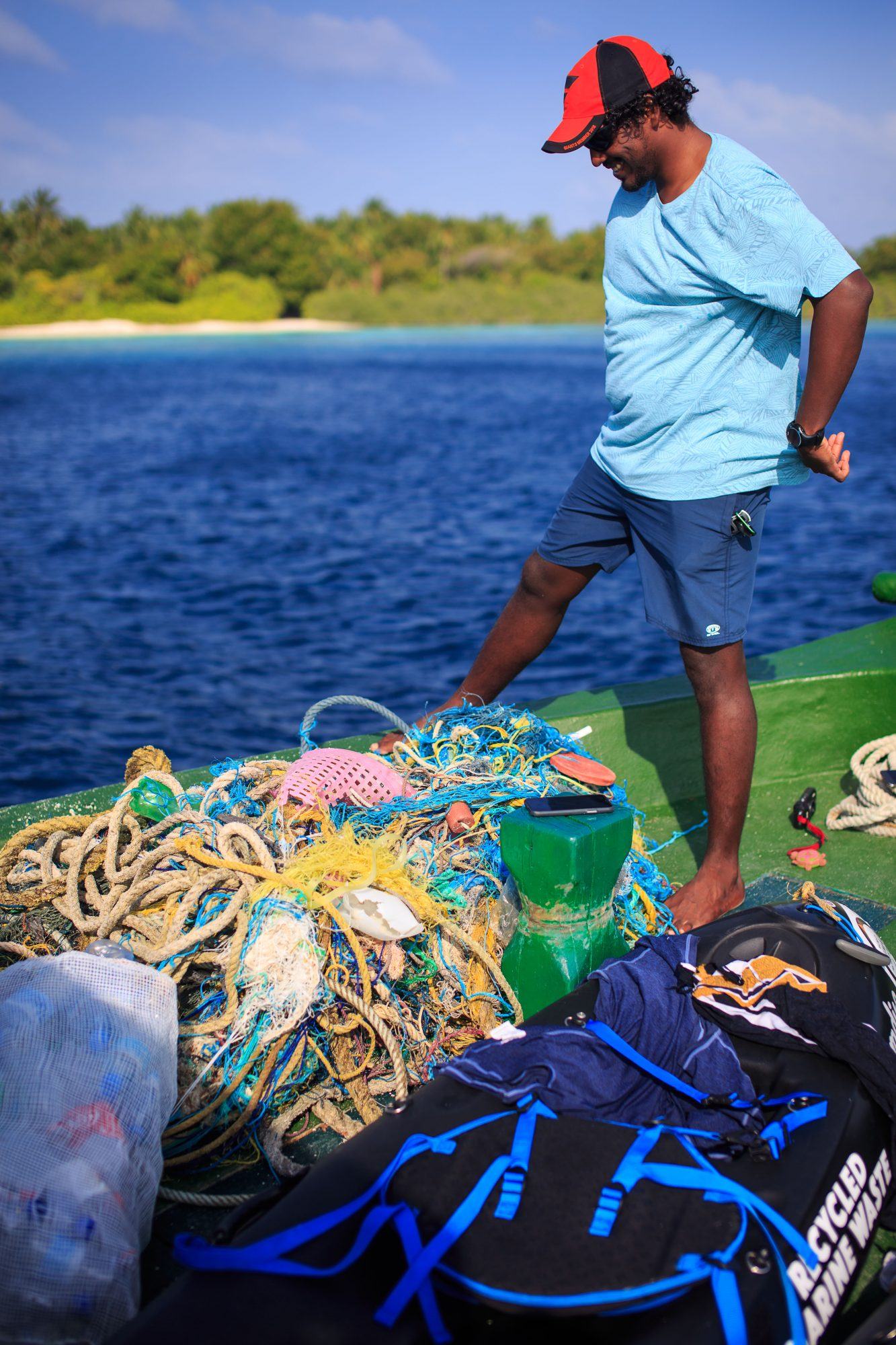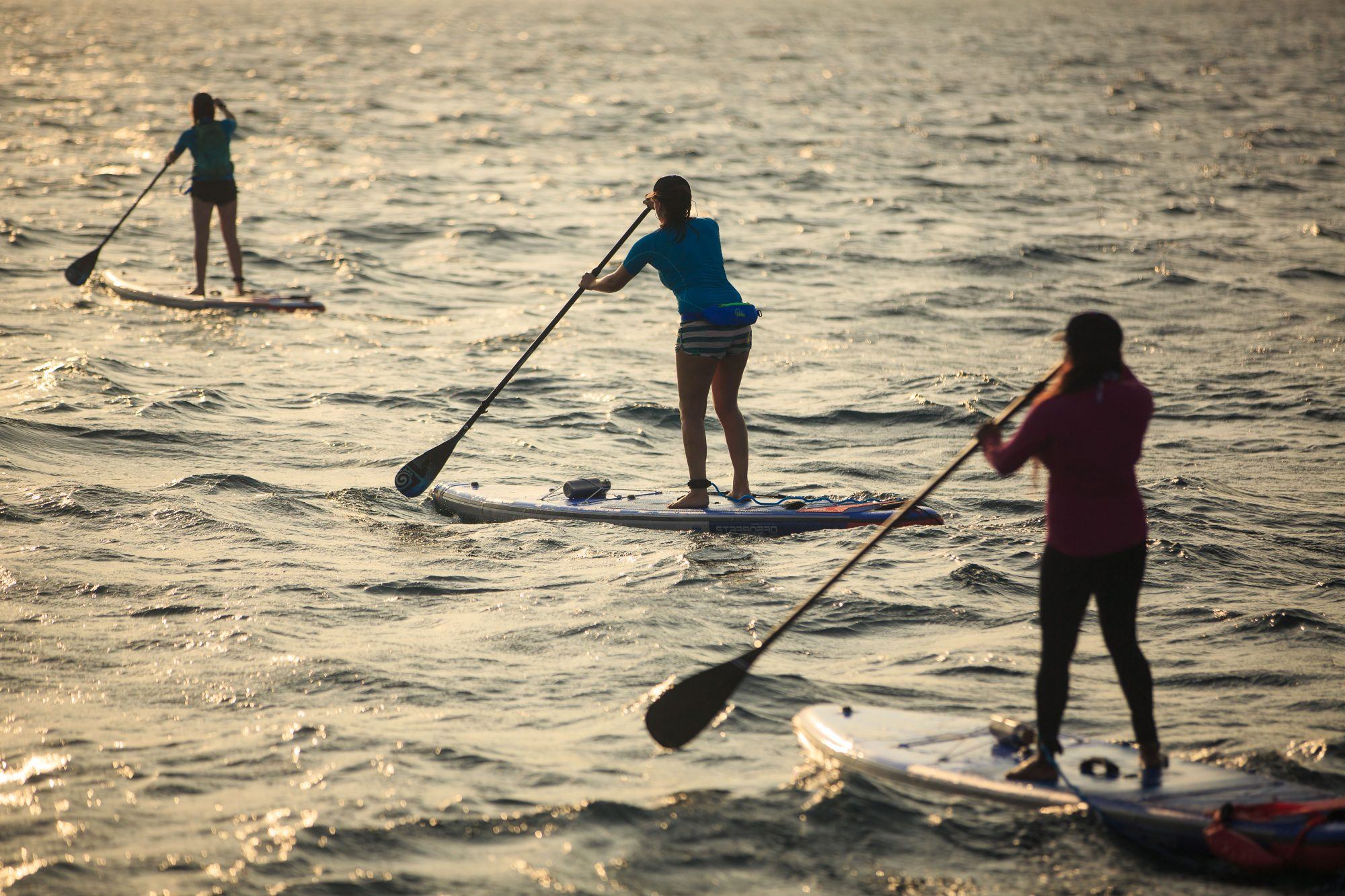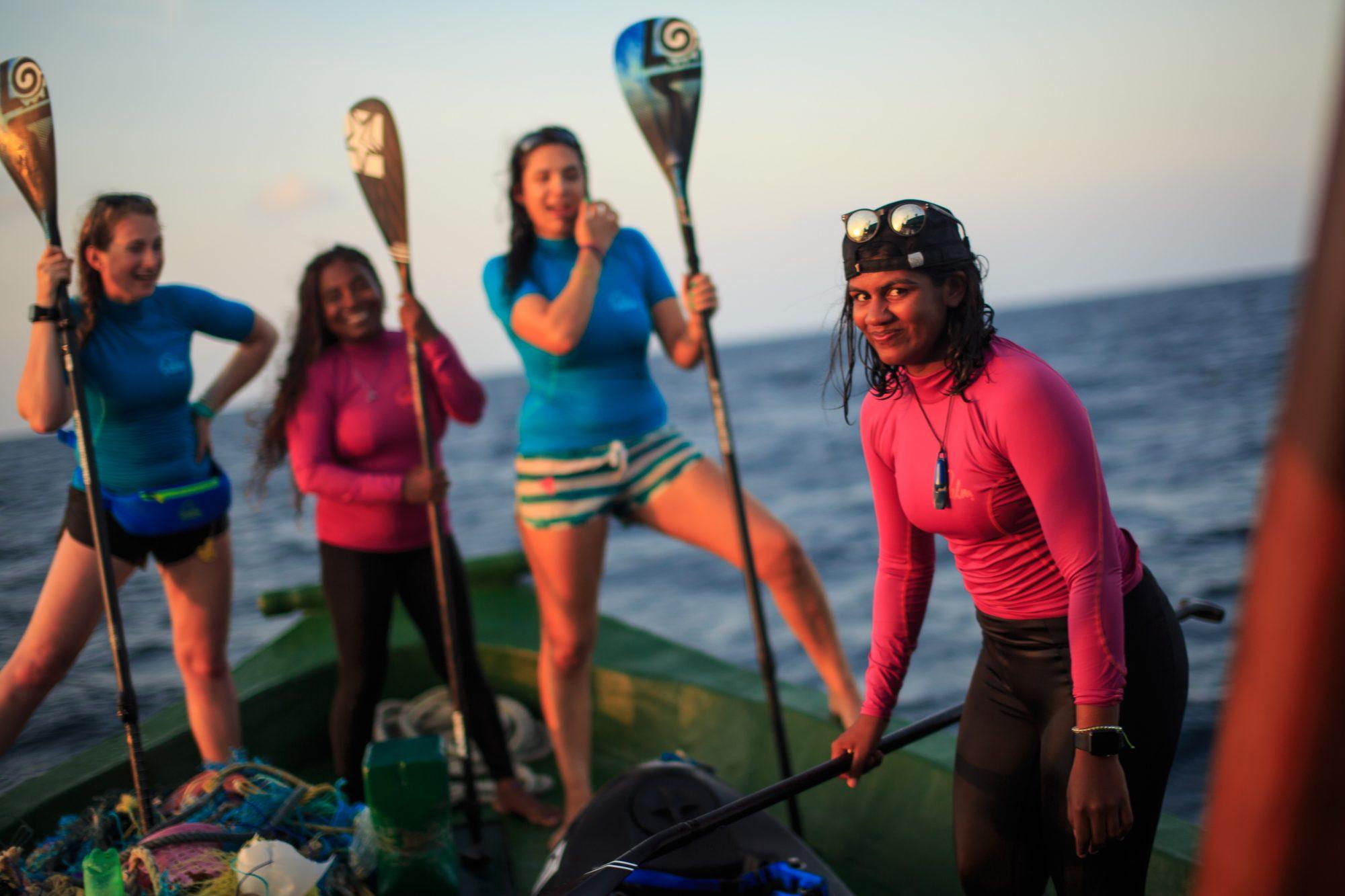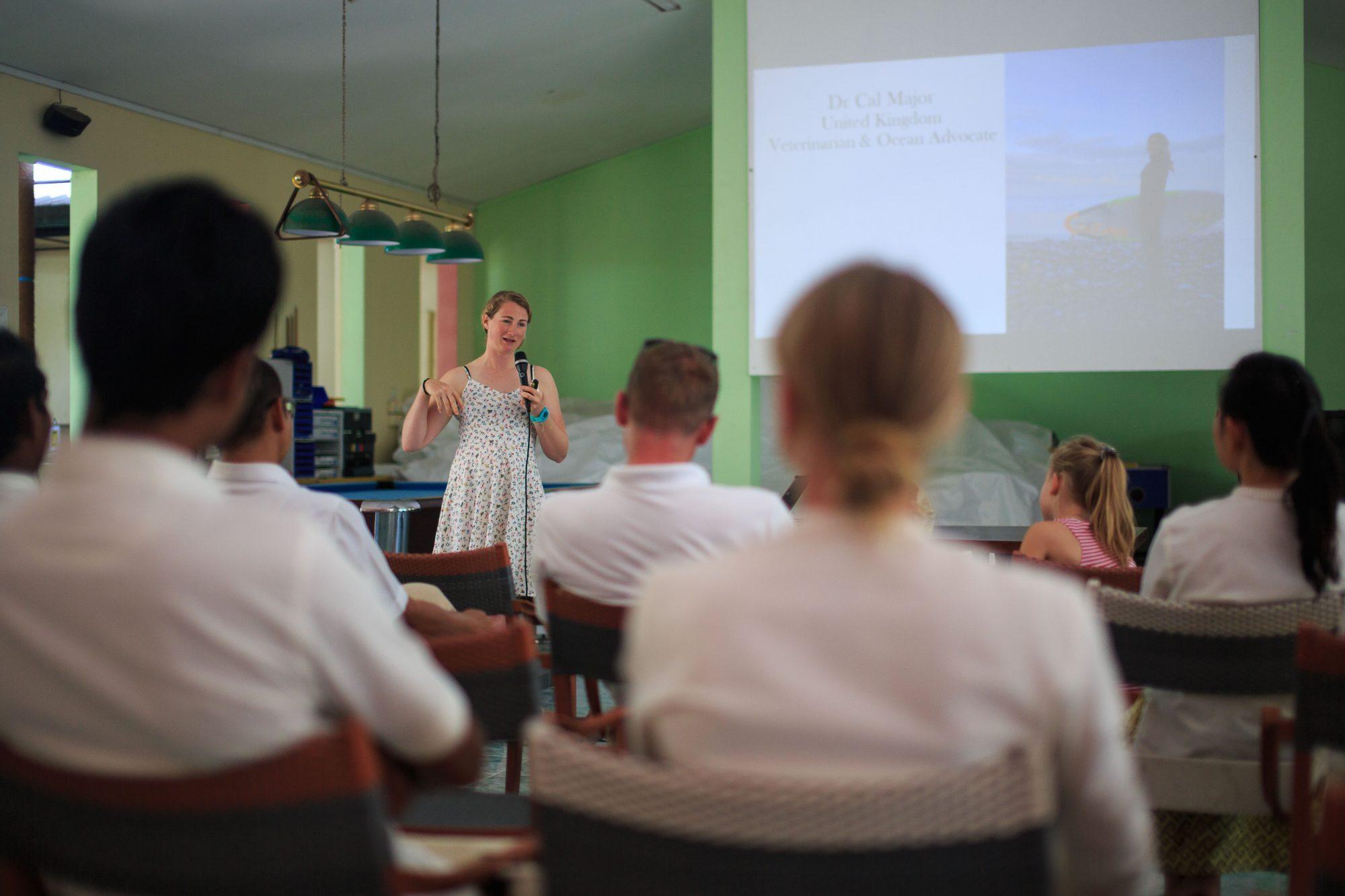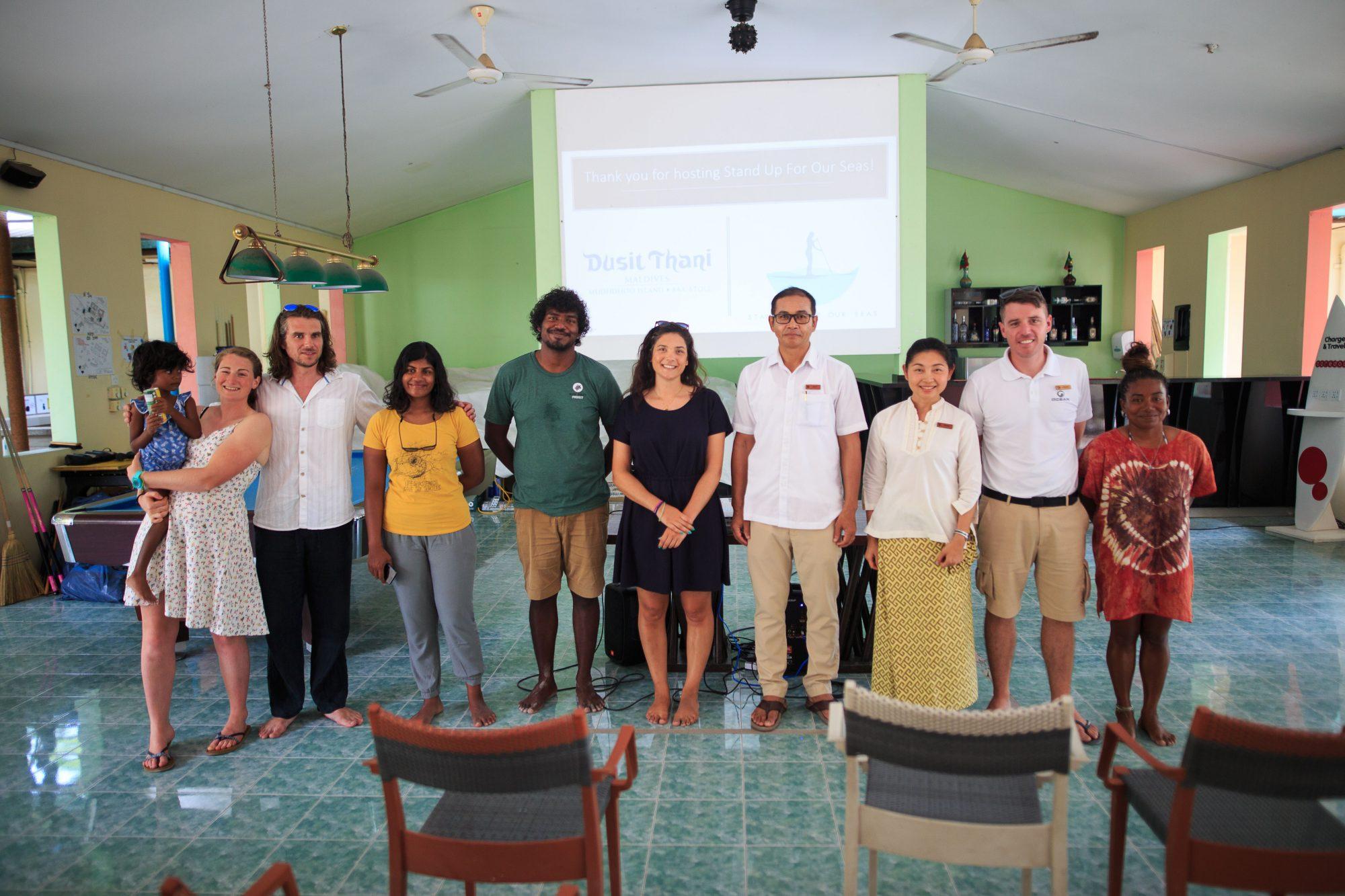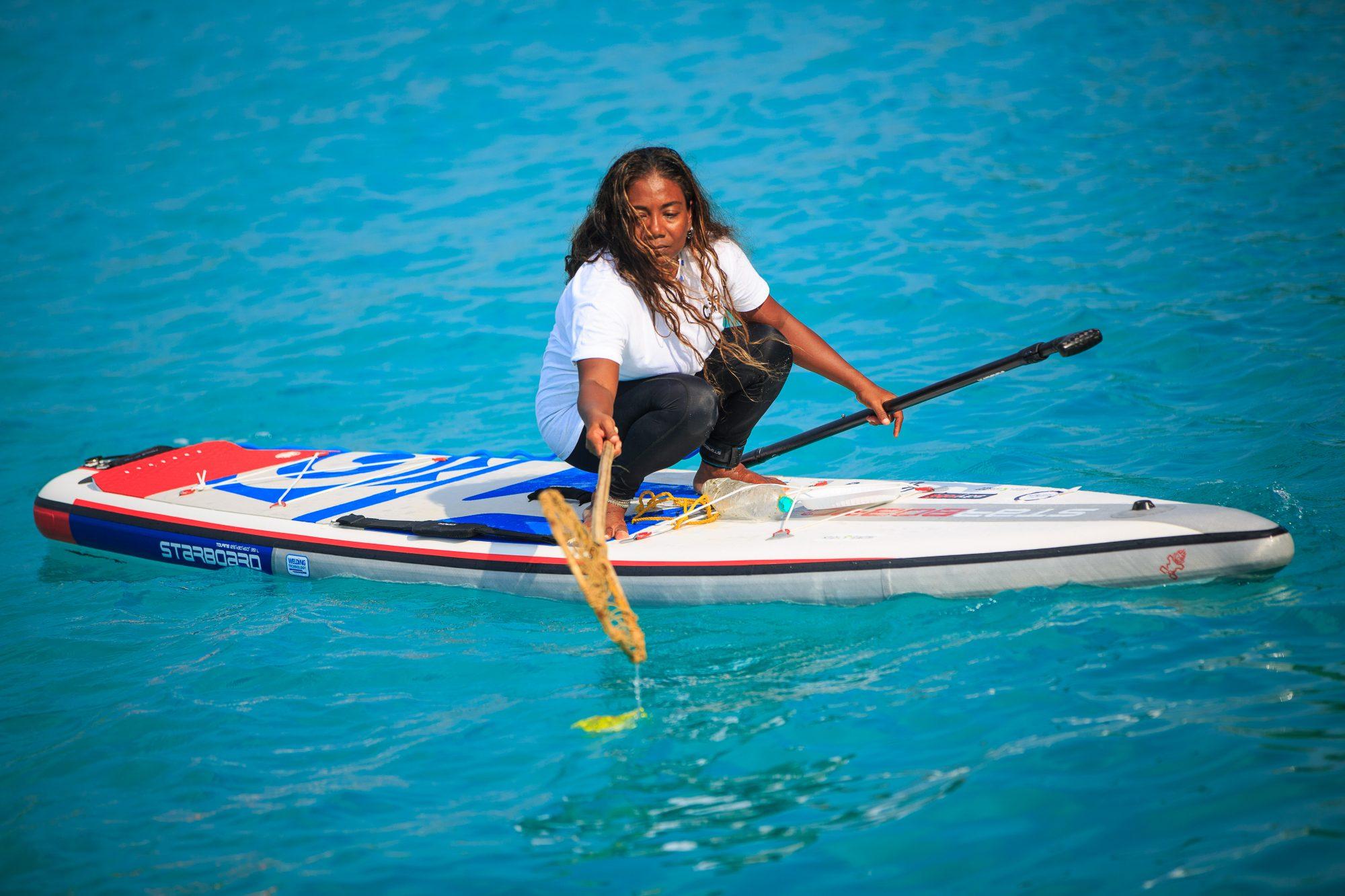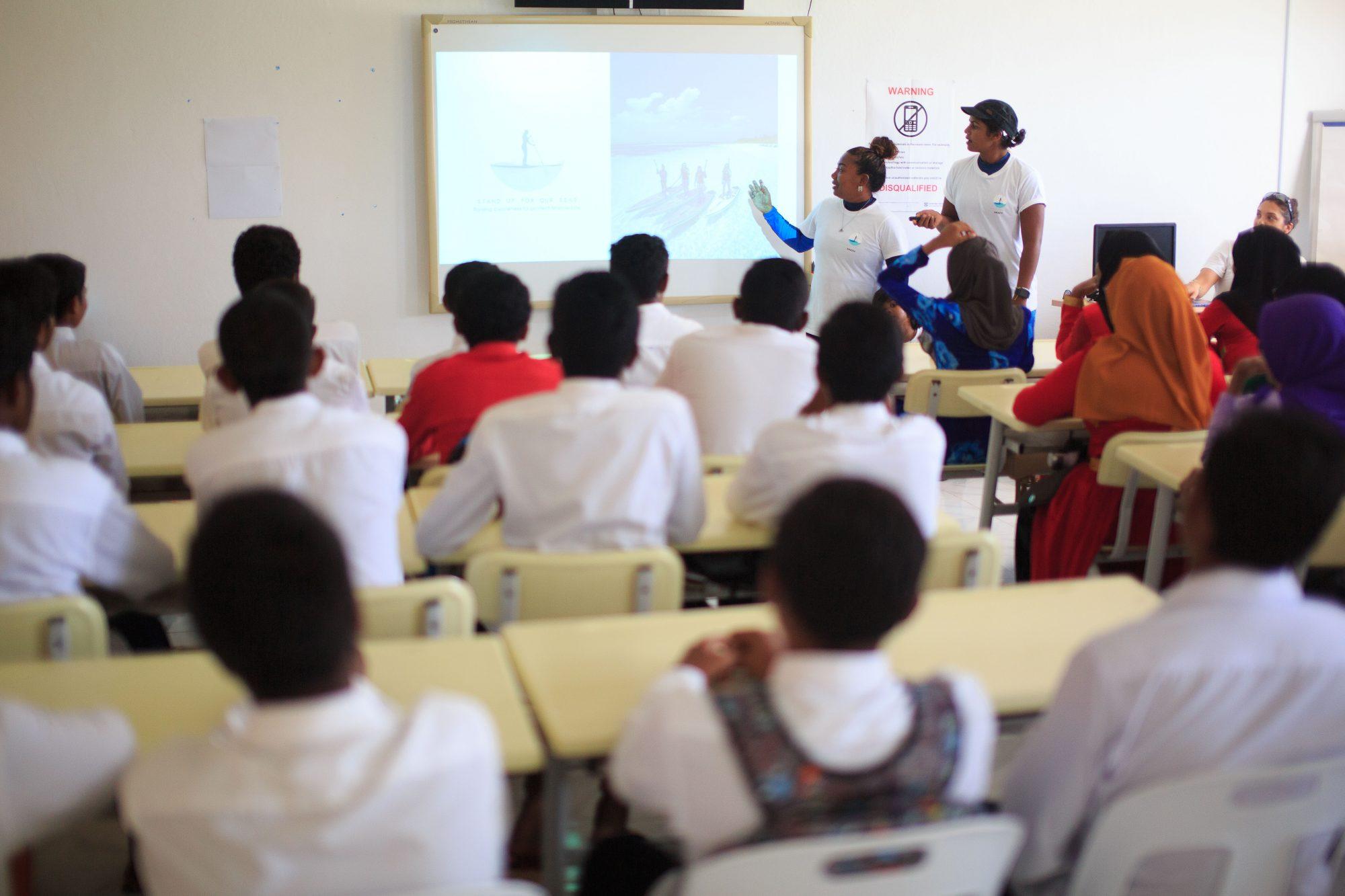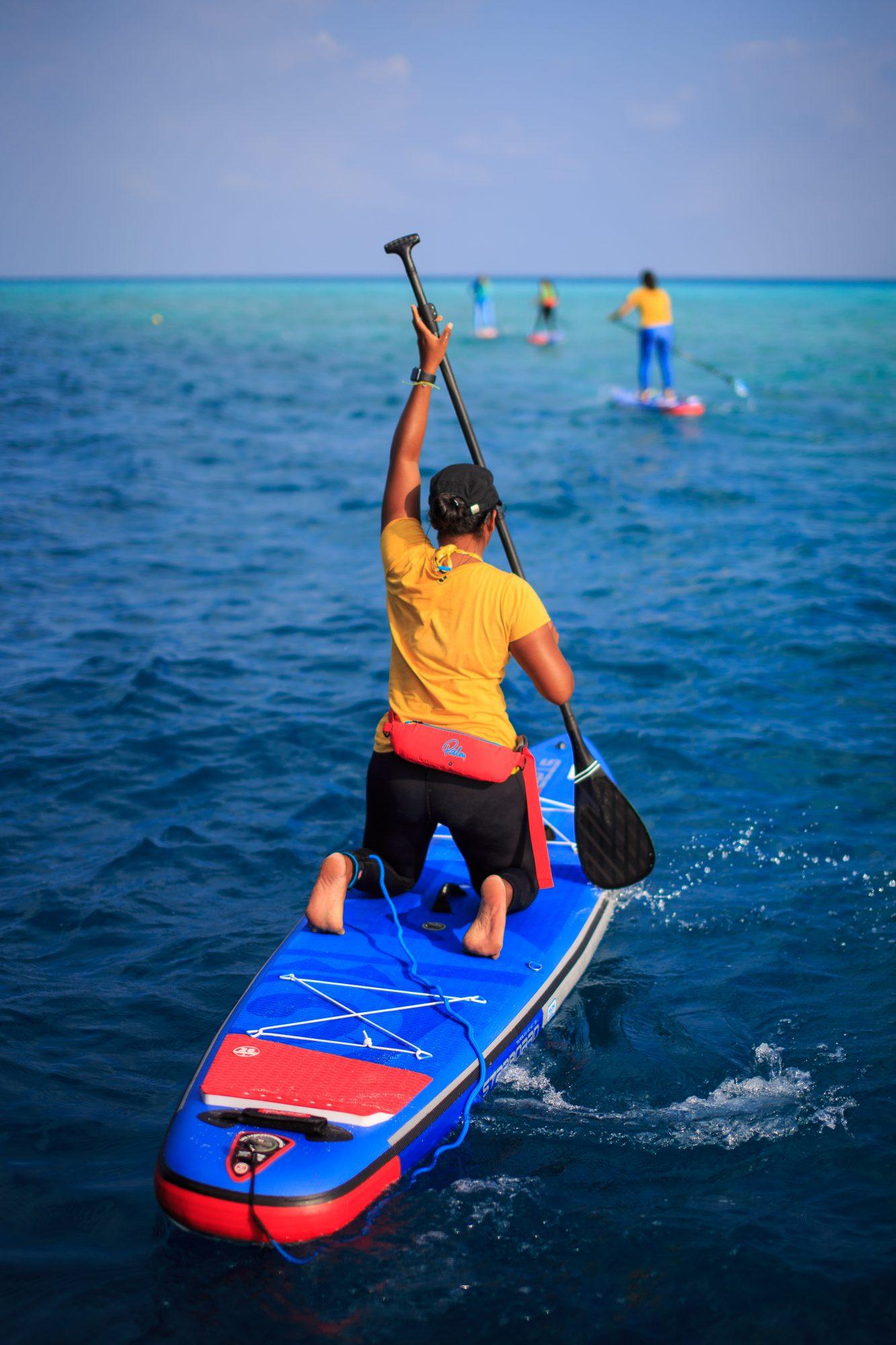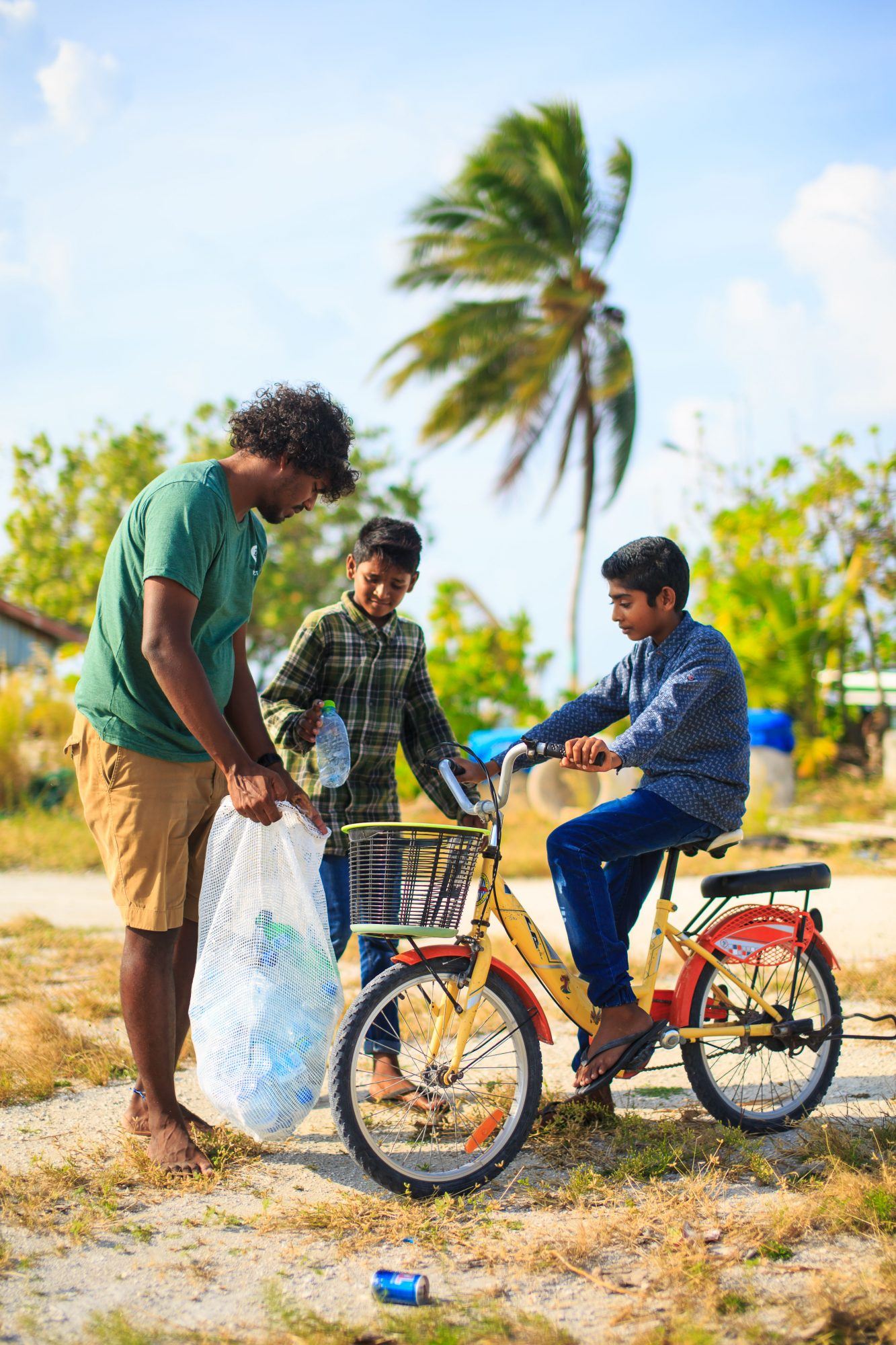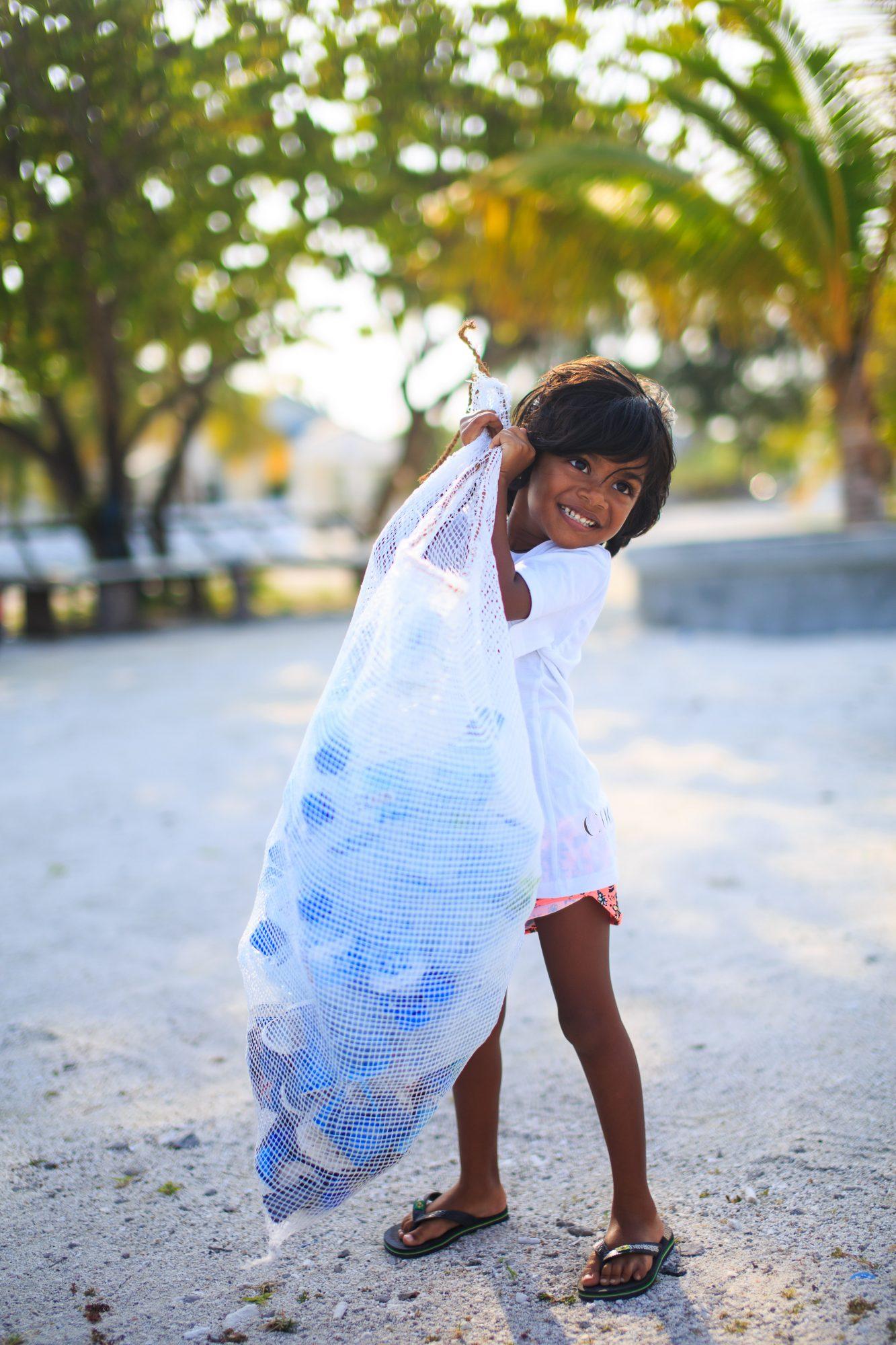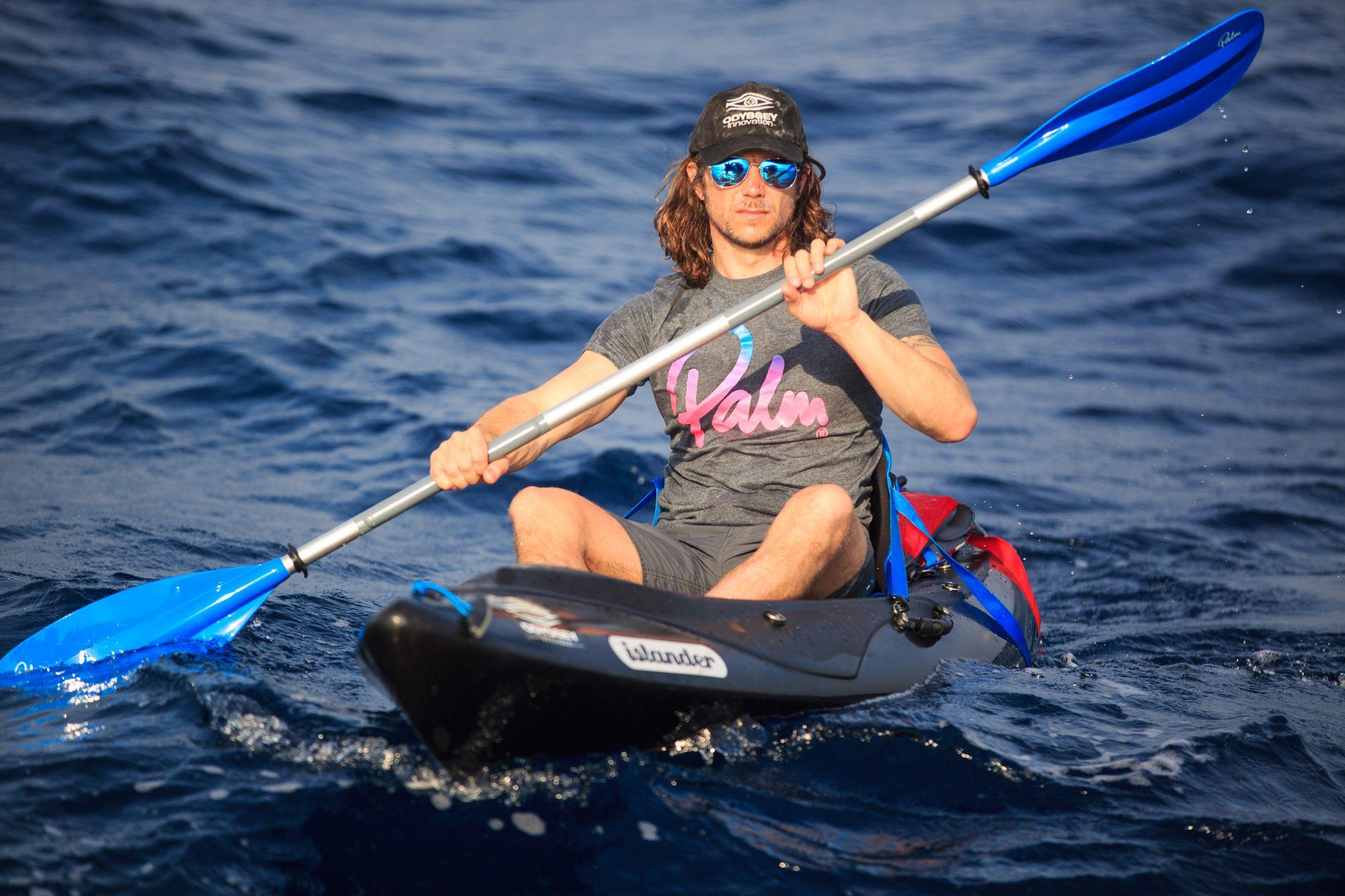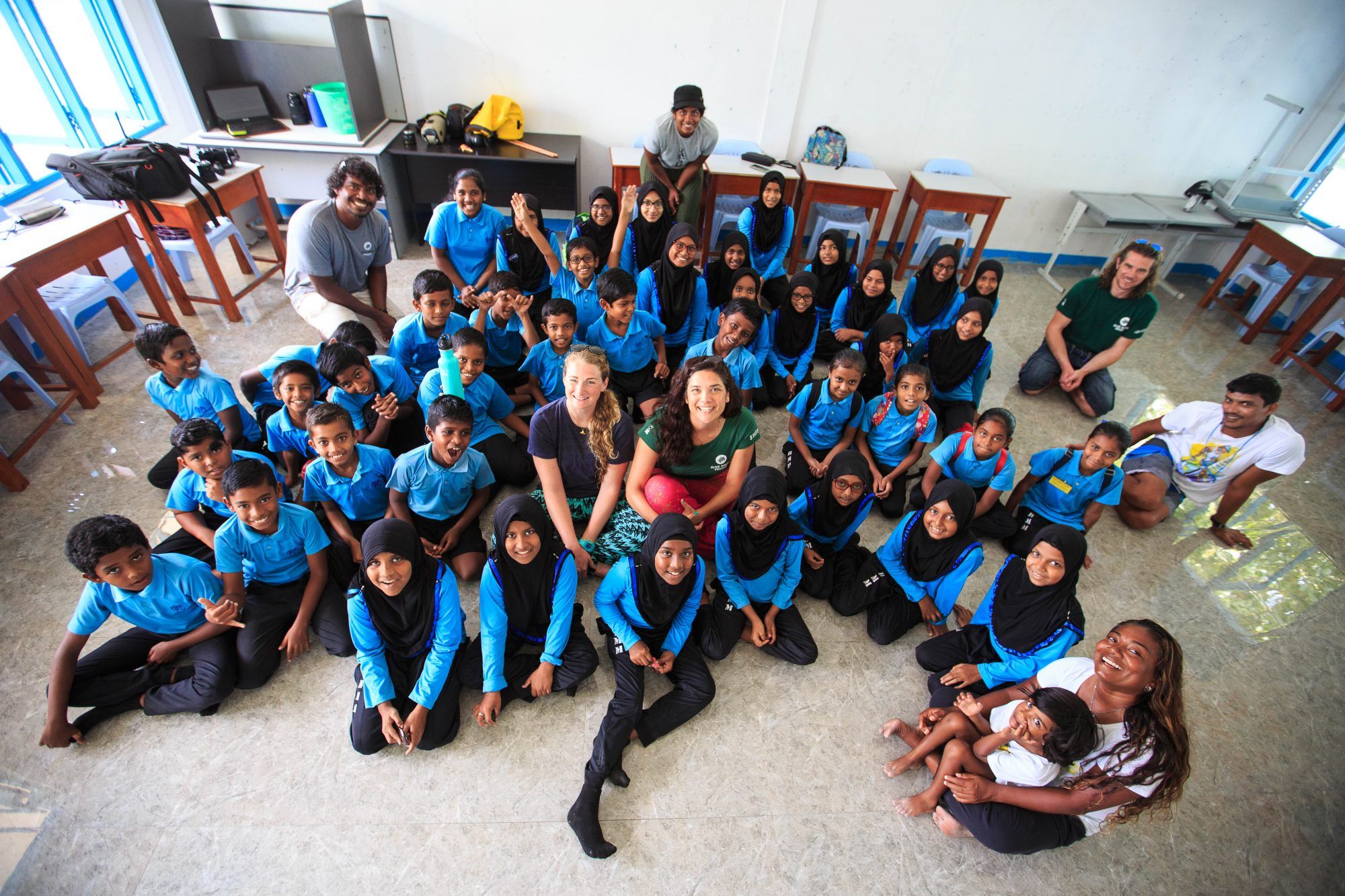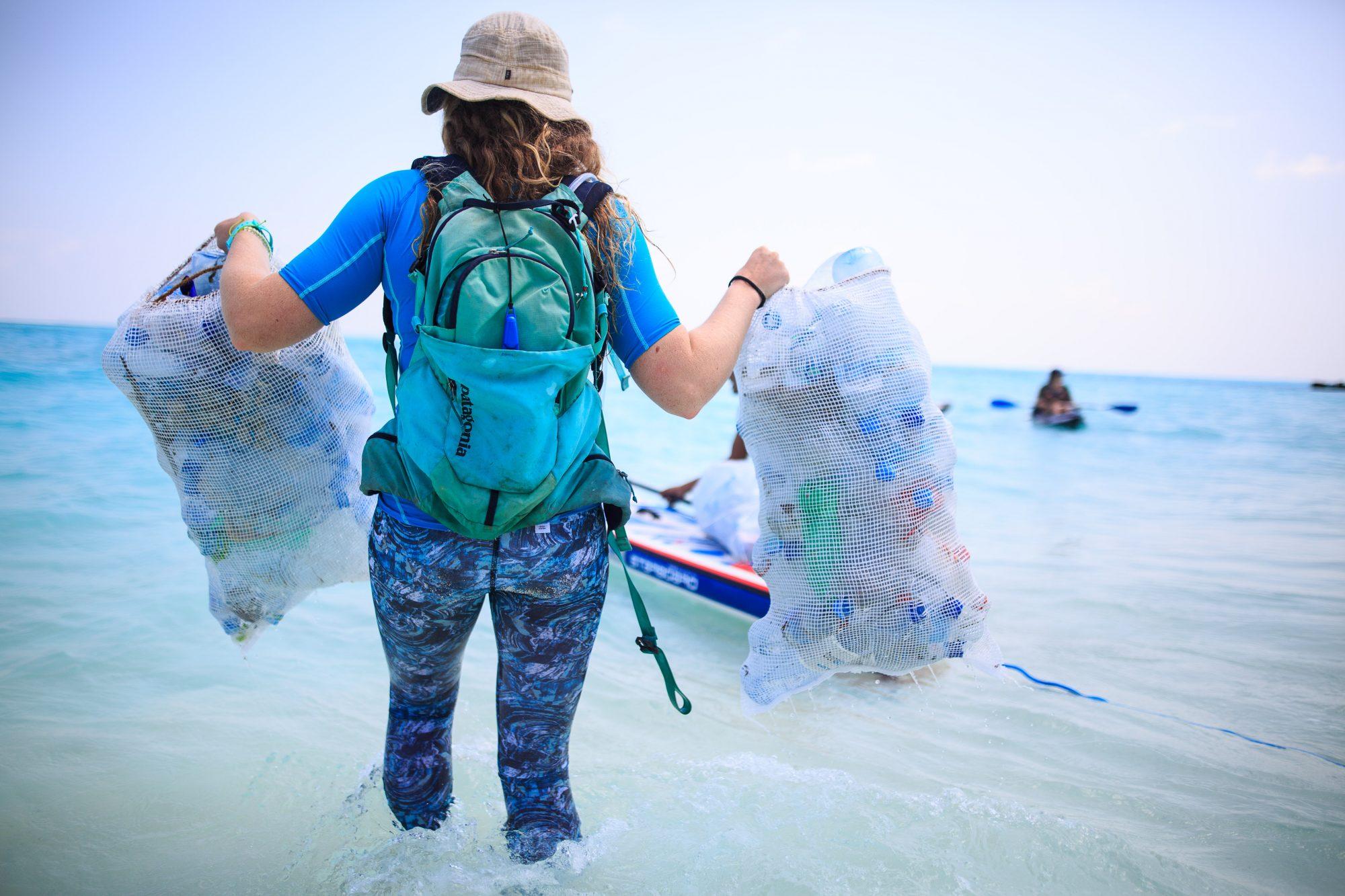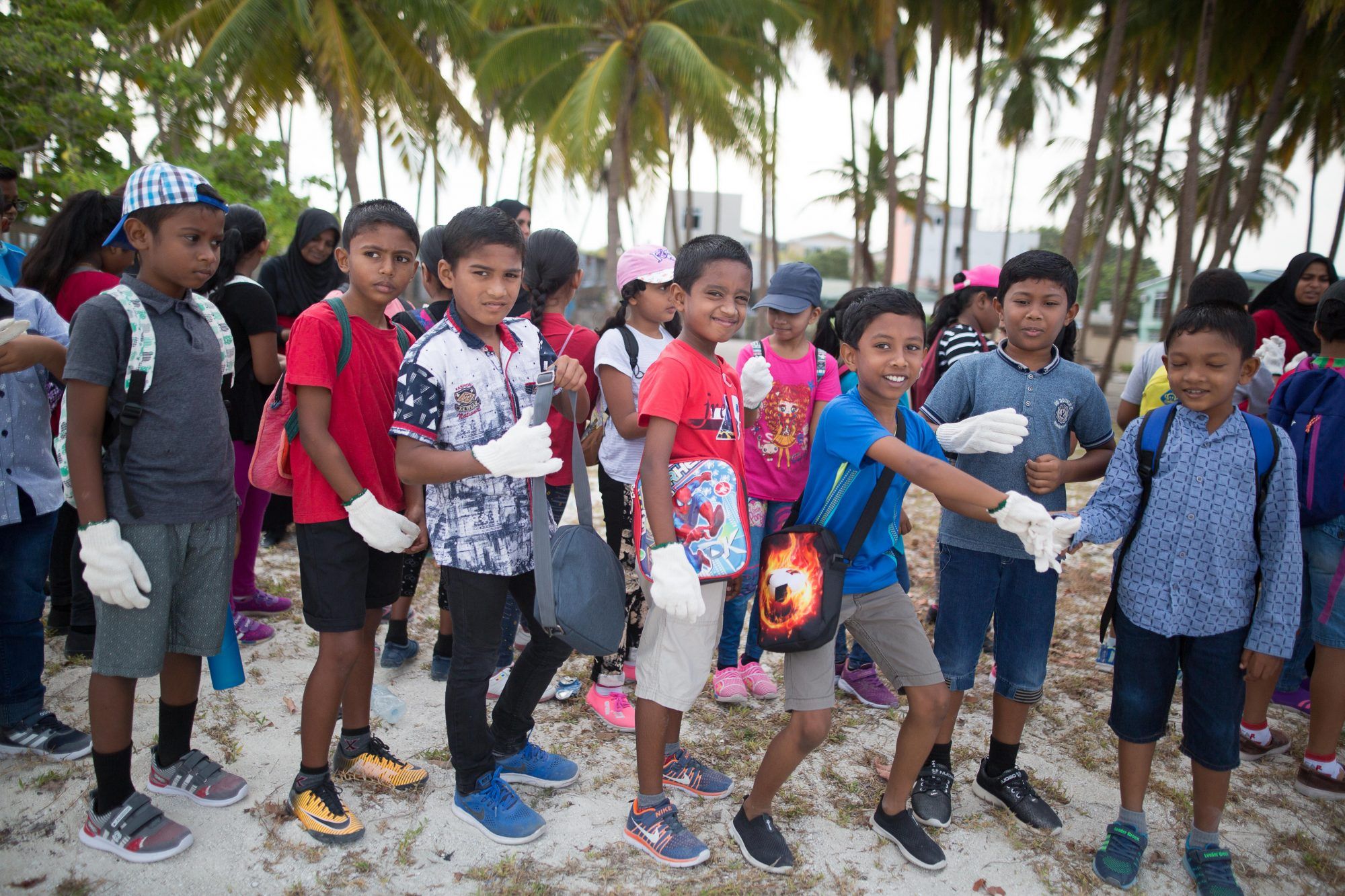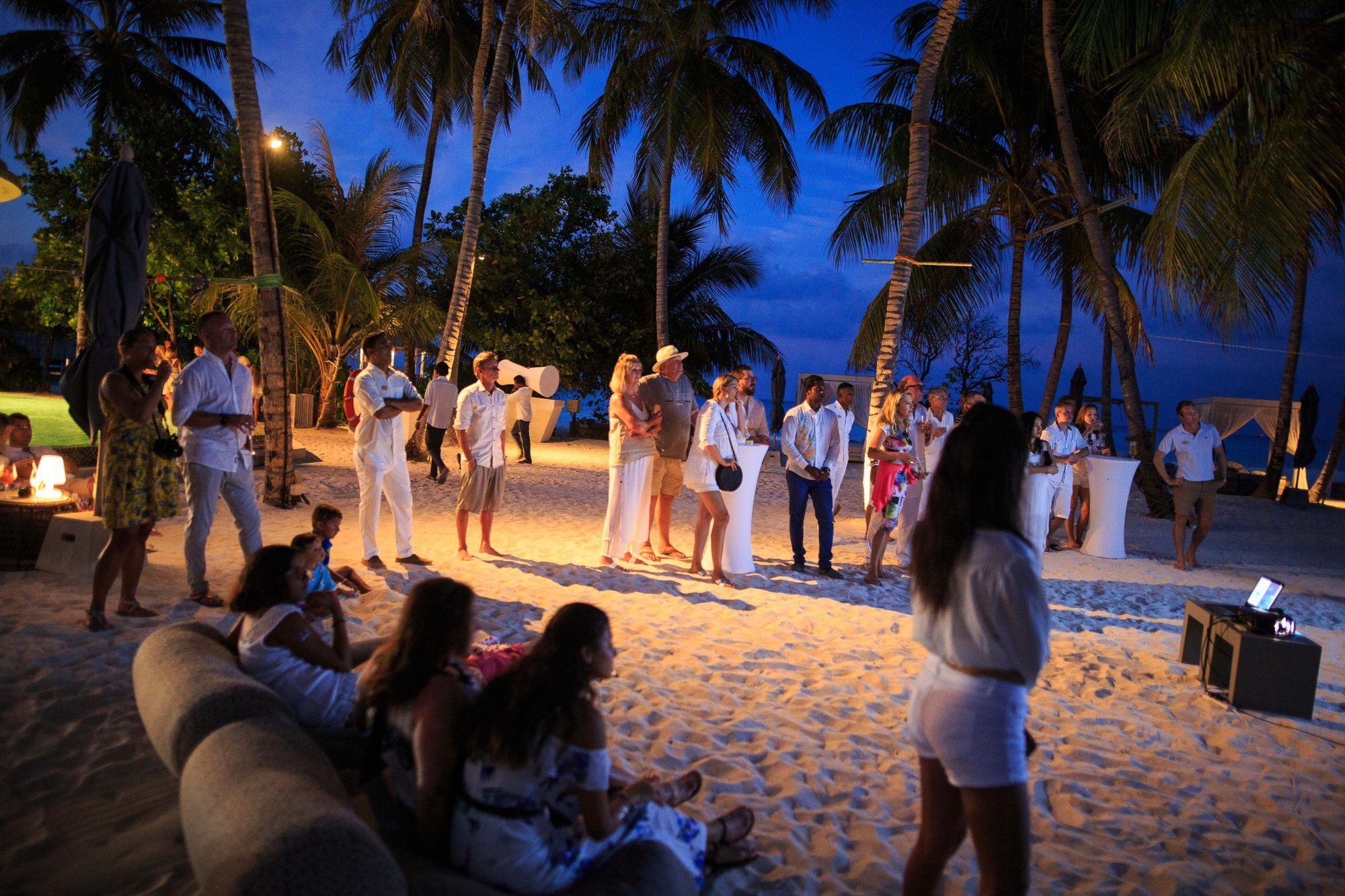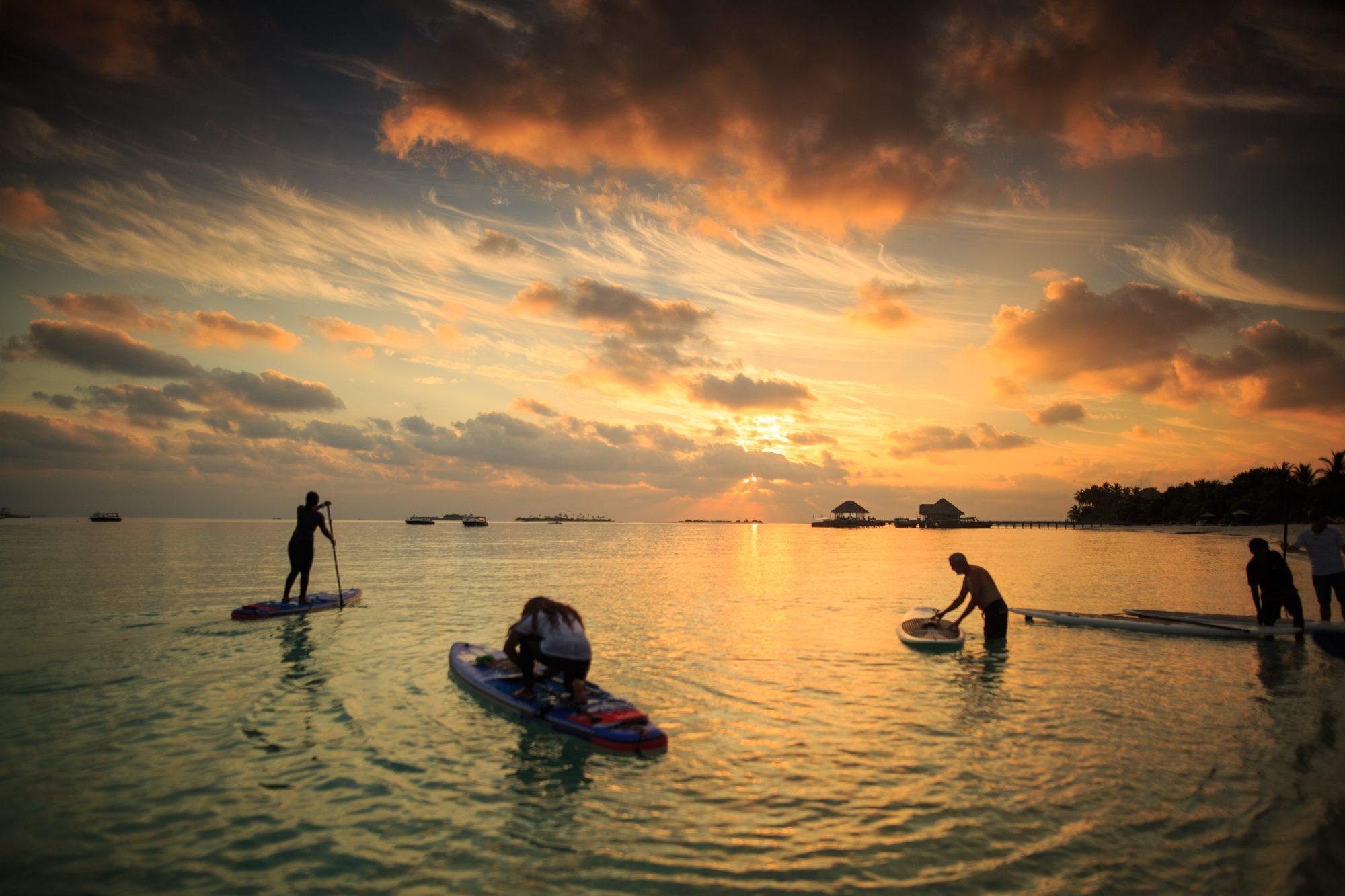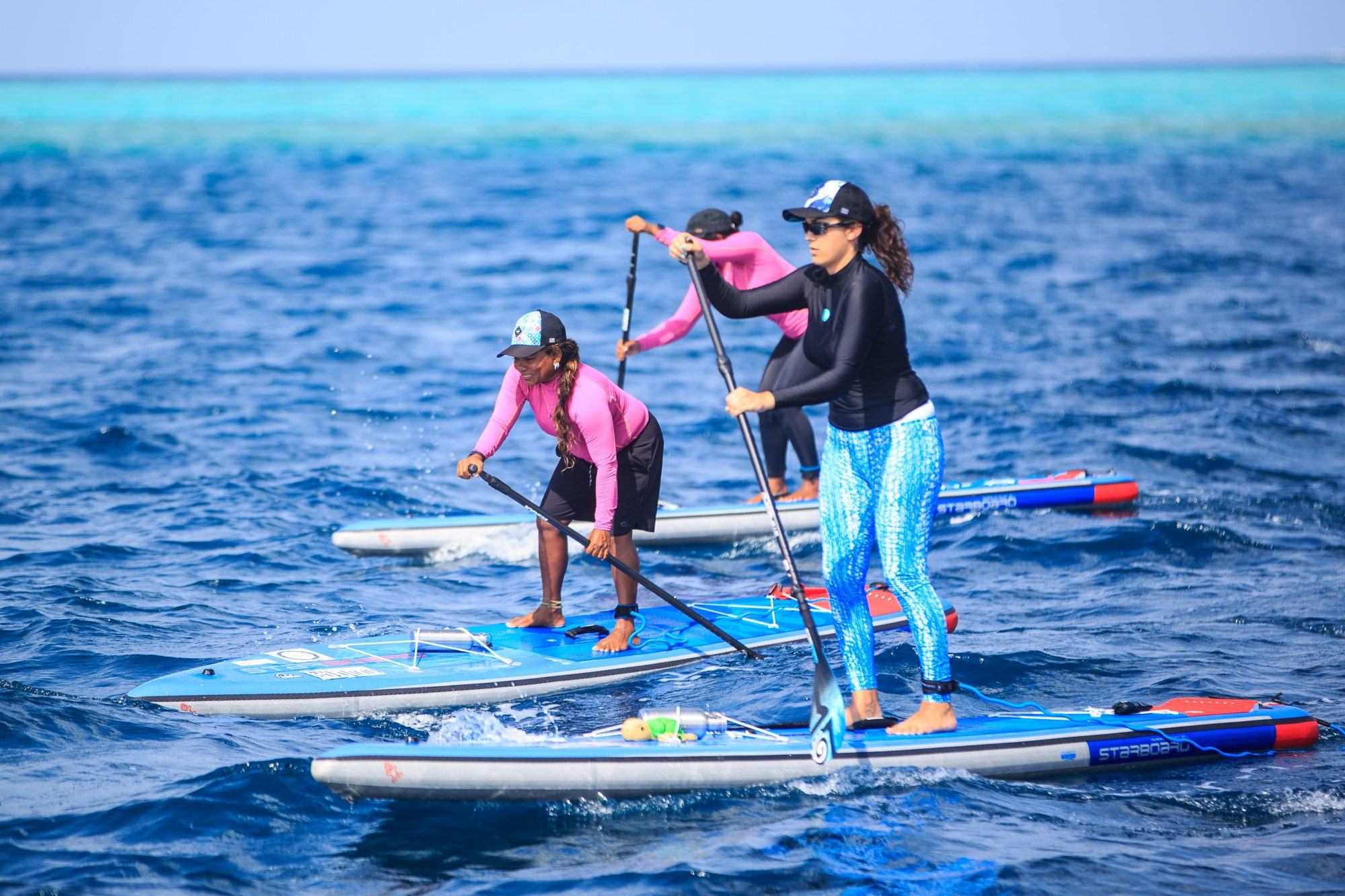In early 2019, just as the weather was getting really miserable in the UK, I was fortunate enough to head off to the Maldives for the trip of a lifetime – circumnavigating one of the tropical atolls by SUP.
Aside from the azure waters and abundant wildlife, the trip had a deeper purpose: a group of four of us planned to take on the challenge – 100 km of paddling around Baa Atoll, stopping off at schools, local islands and resorts along the way to talk about two things: turtles, and plastic. The other members of the group were Claire, head vet of the Olive Ridley Project which is based in the Indian Ocean, rescuing and rehabilitating turtles injured by fishing gear, and researching solutions; Dhafy, a Maldivian personal trainer and ocean campaigner, and Saazu, a Maldivian dive instructor and eco-activist.
Ghost gear; what is it, and where does it come from?
Ghost gear is the name given to fishing gear that’s lost at sea. It’s called ghost gear, because even after it’s no longer being used to fish for food, it still continues to entangle animals as it floats through the oceans in currents taking it around the world. It’s a huge problem, killing hundreds of thousands of marine mammals every year, and damaging reefs and precious ecosystems. The Global Ghost Gear Initiative is working with fishing fleets, small scale fishing operations and NGOs around the world to help tackle this enormous issue. www.ghostgear.org
Where do turtles come into this?
Turtles will swim to floating lost nets and climb onto them to bask in the sun. This regularly leads to entanglement, where the rope gets caught around a flipper or around the turtle’s neck. Not only does this mean the turtle can no longer dive below the surface to find food, but it can cause severe injury, often resulting in the need to amputate a limb. This is what the Olive Ridley Project does, with the help of head vet Claire. Olive ridleys are the most common type of turtle found in these nets since they travel across oceans and are most likely to come into contact with these nets in the Maldives.
And plastic?
We were specifically interested in single-use plastic. This is the stuff often used for a matter of minutes before it’s discarded, only to persist in the environment for hundreds of years. It fragments into smaller pieces, easily ingested by marine life, and leaches harmful chemicals into the environment. The Maldives is surrounded by coral reefs – important ecosystems and breeding grounds, full of animals and plants very susceptible to harm from plastic pollution. The most effective way to stop plastic from getting into the ocean is to reduce our reliance on it – to stop using so much of it and choose more sustainable alternatives.
So our plan was to travel around the island, spreading our message of hope and positivity at what can be done to help tackle plastic pollution in the Maldives, and how to protect turtles, an important ancient species, desperately threatened by the age of plastic.
Thanks for reading – Cal
My full thee-part write up of the trip is here: www.calmajor.com/maldives
